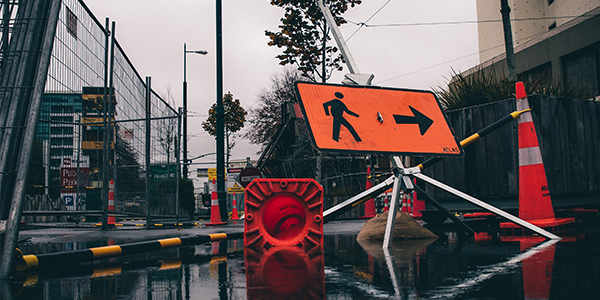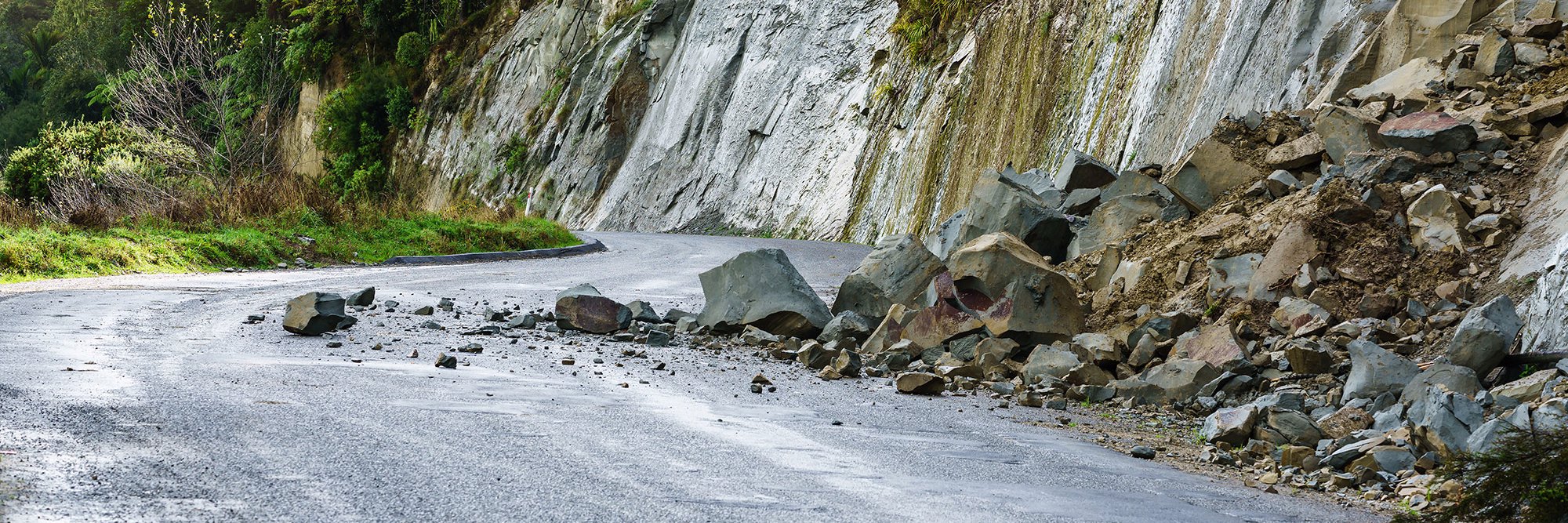Hipkins’ reaction was understandable. The earthquake followed unprecedented rainfall that caused substantial damage in the Auckland region, followed by Cyclone Gabrielle shortly afterwards, which itself caused extensive flooding and other damage in a widespread area including the Hawke’s Bay, Northland, Gisborne, Bay of Plenty and Waikato regions. Geonet, in reporting the earthquake, offered a more restrained observation, saying that it was “a difficult time for the North Island”.
It was also a difficult time for insurers, who calculate reserves and arrange reinsurance based on assumptions that do not factor in multiple major loss events in quick succession.
Auckland Anniversary floods
The Auckland Anniversary weekend floods were unprecedented. A reported 24.5 centimetres of rain – nearly a quarter of a metre – fell in the 24 hours between the Friday and Saturday. This was well above Auckland’s previous record for rainfall in one day, which was 16.1 centimetres of rain recorded on a day in 1985. 24.5 centimetres exceeded the normal rainfall that would be expected in a typical three-month summer.
The resulting flooding caused substantial damage. The Minister of Finance, Grant Robertson, told reporters that, in terms of insurance, it would be the biggest non-earthquake event that New Zealand had ever experienced. The Guardian newspaper in the UK reported that some insurers were describing it as the biggest climate event in the city’s history. Tim Grafton, head of the Insurance Council, was reported as saying that the insurance industry expected the cost to insurers to exceed NZD1 billion.
As well as losses covered by private insurance, Toka Tū Ake EQC (EQC) will receive claims for land damage where landslips were caused by the flooding. EQC provides limited cover for damage to residential land. This extends to the land under an insured home and outbuildings, within eight metres of the home and outbuildings, and under or supporting the main accessway (but not the driveway surfacing), up to 60 metres from the home.
Some owners of clifftop houses suffered high-profile losses of land which collapsed many metres below, in many cases robbing the owners of lawns and other features, but in some cases undermining the foundations of the houses and making them unsafe. Claims for damage to land through landslip may be made to EQC, provided the land is in the covered areas. In many cases, the land lost will not be within the areas that are covered under the Act, so the owner will be uninsured. Even where there is cover, it will be limited to the market value of the land that has been lost (and indemnity value of land structures, such as bridges and retaining walls), and will not likely take account of the much-reduced desirability of the property as a whole, once a part has been lost to landslip.
In addition to private insured losses, Waka Kotahi NZ Transport Agency estimated that the damage to roads from the Anniversary weekend flooding may cost NZD1 billion to repair.

Cyclone Gabrielle
These costs do not include the cost of claims from Cyclone Gabrielle, which Grafton said included around 30,000 claims so far. Grant Robertson has suggested that the total cost of the cyclone damage could be around NZD13 billion, although much of that would not be insured.
The total losses to insurers from both events may be comparable to those that resulted from the Kaikoura earthquake in 2016, which gave rise to more than NZD1.8 billion in insurance claims, including around NZD1 billion for building claims in Wellington. They will be less, however, than the losses from claims arising from the Canterbury earthquakes, which cost private insurers around NZD21 billion and EQC around NZD10 billion.
Legal claims that may result from the flooding and cyclone damage
Those affected by the Auckland floods and Cyclone Gabrielle, including insurers, are beginning to consider the civil liability claims that could arise from these events. Our firm recently spoke to the NZ Herald about the types of claims that could potentially be made.
News articles have raised the possibility of claims arising from the damage caused by forestry slash (i.e. detritus such as branches) when it impacted bridges and other structures in the flooding, which has resulted in the Government’s announcement of a Ministerial inquiry. We discuss slash claims below, but they are by no means the only liability claims that could have an impact on the insurance industry. Other possibilities include:
- Claims against councils, possibly asserting that they negligently failed to provide or maintain appropriate drainage, or that they negligently approved earthworks and other works that exacerbated natural flooding problems.
- Claims against professional service providers, such as architects, engineers and geotechnical engineers.
- Claims against neighbouring landowners for failing to resolve hazards or making changes that exacerbated flooding.
- Claims against EQC for land damage.
- Claims against private insurers for flood and related damage
Forestry slash
The prospect of forestry slash claims is attracting increasing media attention.
In principle, claims in negligence or nuisance may be available to property owners who have suffered slash damage. Claimants would need to establish, among other things, that:
- The relevant damage was caused by slash from an identifiable source, or at least a finite number of identifiable sources (i.e. forestry companies).
- The owner of the slash had a duty of care to downstream property owners to prevent the escape of slash in a severe weather event and that the resulting damage was foreseeable (for negligence) or that the build up of slash and its escape was caused by a non-natural use of the land (for nuisance).
There may be difficulties in identifying the source of damage-causing slash. However, that is not necessarily a barrier to claims. The High Court Rules allow plaintiffs to sue several defendants on the basis that they do not know which caused the relevant damage. One of the issues in the proceeding will be the identification of the correct defendant.

Potential plaintiffs may band together to create a representative (class) action if a sufficient number suffered damage likely caused by the same landowner’s slash, or an identifiable group of landowners’ slash. A variation on that theme might be a staged class action where multiple potential defendants are sued, first for a declaration as to the cause of damage and other preliminary issues, and second for individual claimants to prove loss. A similar model was to be adopted in the Ross v Southern Response litigation. Yet further variation might well be insurers collating subrogated claims covered under their policies and prosecuting those claims in group form.
These claims will likely engage landowners’ public liability insurance (if held) and may also result in shareholder claims if slash was not managed as required.
Aside from civil claims, there may also be prosecutions for breach of consent requirements to clear slash. Those claims may engage landowners’ statutory liability policies.
Claims against councils
Councils may be sued for a failure to act when forestry companies breach their obligations to manage slash. Councils may also be subject to claims arising from consenting decisions. Properties built in flood-prone areas may be subject to scrutiny in terms of the steps required to mitigate flood risk.
Litigation may also flow from any council decisions around ‘red zones’ prohibiting rebuilding in certain flood-prone areas.
Claims against professional service providers and others
Catastrophic events tend to increase the risk of claims against professional service providers. This is primarily because the magnitude and extent of the loss unearths potential defects that would not have been identified if the event had not occurred.
Insureds who find that they are not covered to the extent they expected (or now expect) may look to their insurance brokers for answers.
Claims could also arise against builders, architects, engineers and geotechnical engineers who designed or approved buildings that were susceptible to flooding or cliff collapses.
Claims may also be made against neighbouring landowners for failing to resolve hazards or making changes that exacerbated flooding.
Where buildings have sold recently, claims could be made against vendors or estate agents if relevant misrepresentations were made.
Solicitors may be found liable for failing to identify relevant details such as flood risk warnings in LIMs. Property owners could take action, as could lenders who relied upon solicitors
“Unsurprisingly, these events are having an effect upon the New Zealand insurance market. That impact is likely to deepen if the claims discussed above eventuate.”
Effects upon insurers
Unsurprisingly, these events are having an effect upon the New Zealand insurance market. That impact is likely to deepen if the claims discussed eventuate.
Insurance premiums are tipped to rise. One reason for this is that insurers’ apprehension of a risk often increases once that risk has eventuated. Mel Gorham, Chief Executive of the Insurance Brokers Association, is reported as saying that insurance rates could be in for a re-think as the extent of the damage from the flooding is revealed, and that even before this event, insurers were looking with greater scrutiny at flood risk.
Another reason is that multiple, large claims in quick succession drain insurers’ reserves, and insurers may have to replenish them. This may be achieved by seeking funding from shareholders or external funders or, in the case of large group insurers, by transferring funds from other parts of the business. In the longer term, premiums will likely rise to fund the replenishment of reserves, but that does not solve the immediate need.
Furthermore, some insurers may take the view that it is prudent to obtain additional or amended reinsurance with a lower deductible. This will likely increase the demand for reinsurance with relatively low deductibles, at least for a time. It will also increase insurer’s costs, as the lower deductibles will come with higher reinsurance premiums which are likely to flow through to customers.
It is also likely that there will be wider flow-on effects which will affect insurers along with others. The cost of labour and materials in the construction industry is likely to rise as a large stream of work becomes available for the repairs of flood and cyclone damage. Subject to policy limits, this will increase costs for insurers as they fund repair and replacement works. It may also increase business interruption insurance payments, where insureds are unable to arrange repairs to business premises in a timely manner because of the shortage of skills and materials.
The significance to insurers of the Auckland Anniversary weekend floods and the further damage caused by Cyclone Gabrielle is therefore potentially broader than the immediate cost in terms of reductions in reserves and increased premiums. Longer term reinsurance costs will likely rise, as will costs, and the risk of a wave of liability claims that engage defence costs cover.



